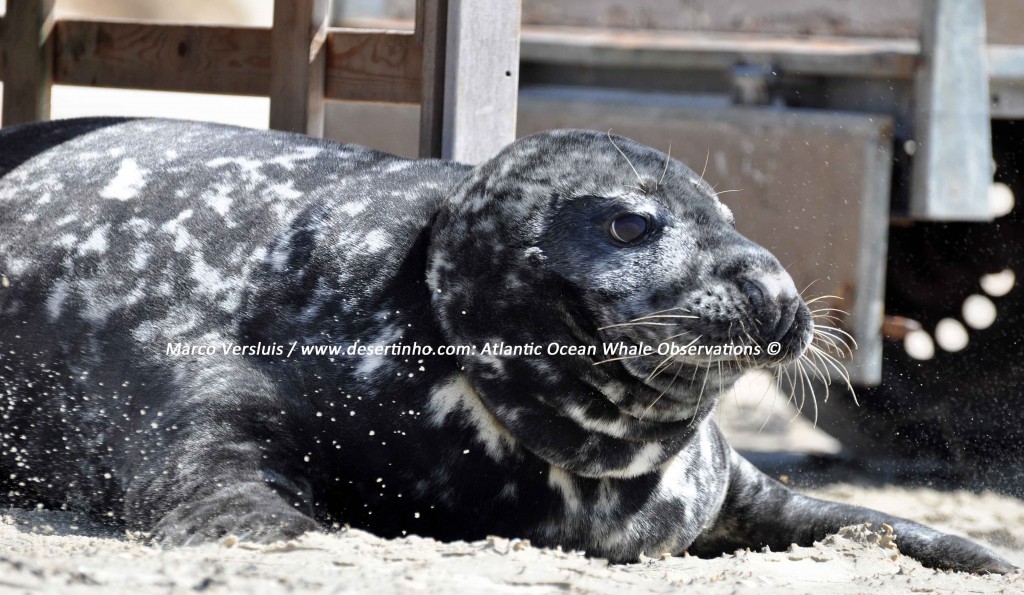The 2nd most common seal species in the Netherlands is the Gray seal (Halichoerus grypus). Gray seals principally live in the northern part of the Netherlands near the Wadden islands Texel, Vlieland and Terschelling. The Wadden sea is an important place for them because of the amount of fish and sandplates. Gray seals need both because they can rest there and give birth to their pups. Gray seal pups are born in between november and december and they have white fur at birth. Therefore gray seal pups can not swim inmediately at birth. For Common seal pups (Phoca vitulina) it is the other way round. Gray seal pups are independent of their mother during their suckling period. Gray seals are the “Travellers” of the North – and Wadden sea and they are on top of the foodchain in both seas.
De grijze zeehond (Halichoerus grypus) is de tweede meest voorkomende zeehondensoort in de Waddenzee en de Noordzee. Ze leven vooral in het noorden van Nederland bij de Waddeneilanden Texel, Vlieland en Terschelling. De Waddenzee is een belangrijke plek voor hen vanwege de hoeveelheid vis en zandplaten waar op ze kunnen rusten en kunnen bevallen van hun pups. De pups van de grijze zeehond worden geboren in de maanden november en december en hebben bij de geboorte een witte vacht. Dit is de reden waarom deze pups niet direct kunnen zwemmen na de geboorte. Dit in tegenstelling tot de pups van de Gewone zeehond (Phoca vitulina). De pups van de grijze zeehond zijn, na de geboorte, heel afhankelijk van hun moeder vanwege hun noodzakelijk zoogperiode. De grijze zeehond is de “Reiziger” van de Waddenzee en de Noordzee en staat aan de top van de voedselketen.
